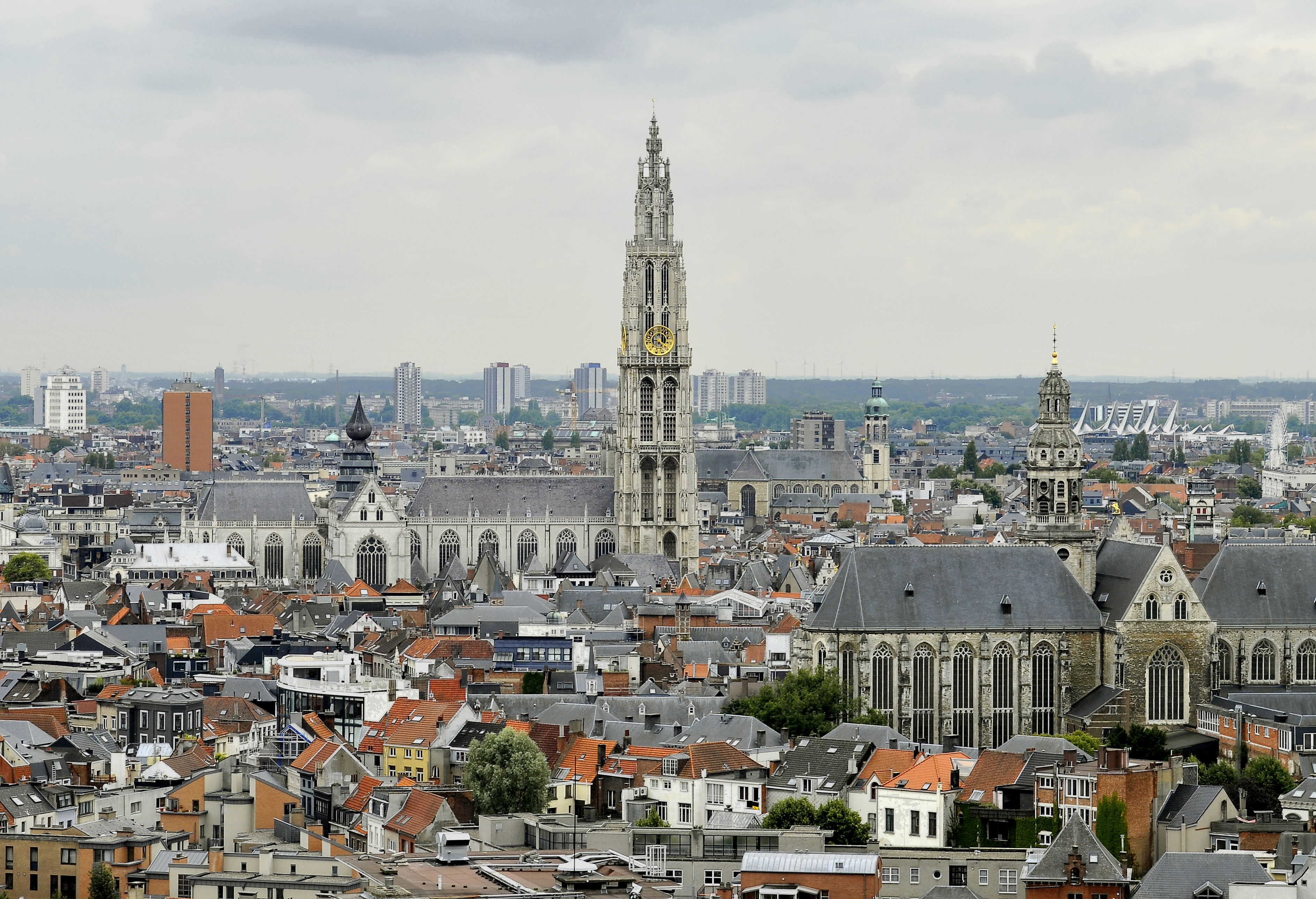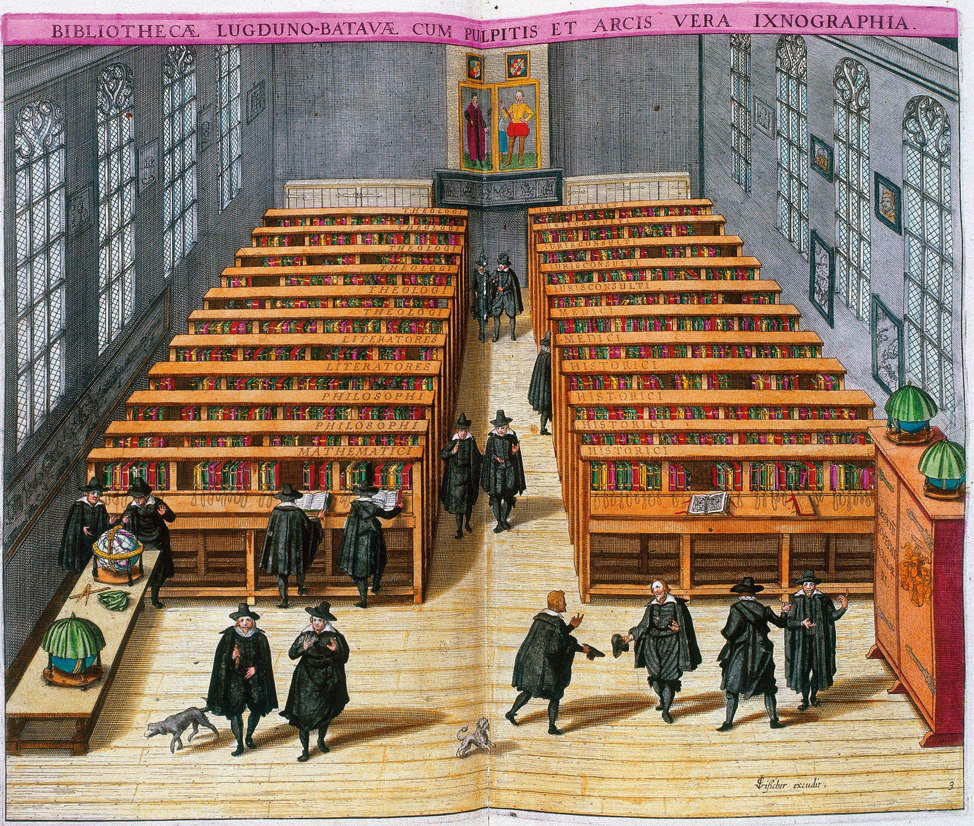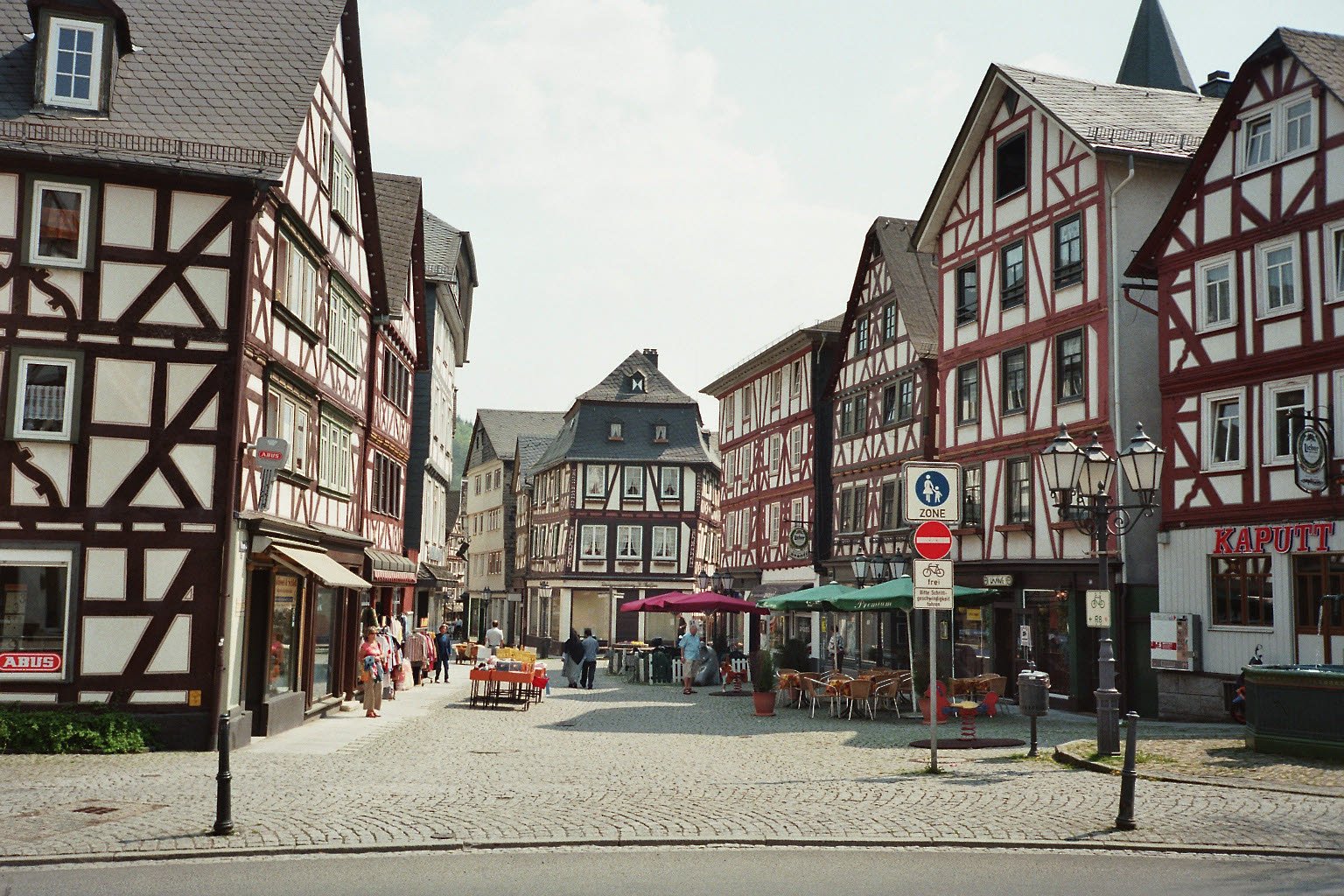|
Jan Rubens
Jan Rubens (1530–1587) was a Flemish magistrate of Antwerp, best known today as the father of Peter Paul Rubens. Family Rubens was born in Antwerp to an old merchant family.Jan Rubens in the NNBW He was trained as a scholar and travelled to Italy where he received his diploma in Canon law in Rome in 1550. He returned north in 1557 and set up his practise in Antwerp where he married Maria Pypelinckx in 1558. On 7 May 1562 he became magistrate of Antwerp and served until 1568, when he fled to Cologne with his family, probably to avoid the Council of Troubles. His position and that of his fellow magistrates became precarious when the Duke of Alva came north to suppress the rebellion after the Beeldenstorm. Johann VI, Count of Nassau-Dillenburg. In Cologne he could renew his work as a lawyer, because there were many Dutch refugees there who wanted to recover seized property they had left behind. He began to work as an advisor to Anna of Saxony and they had an affair at her hom ... [...More Info...] [...Related Items...] OR: [Wikipedia] [Google] [Baidu] |
Antwerp
Antwerp (; nl, Antwerpen ; french: Anvers ; es, Amberes) is the largest city in Belgium by area at and the capital of Antwerp Province in the Flemish Region. With a population of 520,504,Statistics Belgium; ''Loop van de bevolking per gemeente'' (Excel file) Population of all municipalities in Belgium, . Retrieved 1 November 2017. it is the most populous municipality in Belgium, and with a metropolitan population of around 1,200,000 people, it is the second-largest ... [...More Info...] [...Related Items...] OR: [Wikipedia] [Google] [Baidu] |
Johann VI, Count Of Nassau-Dillenburg
Count John VI of Nassau-Dillenburg (22 November 1536 – 8 October 1606) was the second son of William the Rich and the younger brother of William the Silent. He has a special place in the history of the Netherlands because he is the male-line forefather of the House of Orange which ruled that country until 1948. John VI of Nassau-Dillenburg was a Count of Nassau in Dillenburg. Other names he had were ''Jan VI'' or ''Jan de Oude'' ("John the Elder", to distinguish him from his 2nd son, "John the Middle", and his grandson "John the Younger"). John VI was born in Dillenburg, the second son of Count William I of Nassau-Dillenburg and his second wife Juliane of Stolberg-Wernigerode and brother of William I of Orange. He was the principal author of the Union of Utrecht. Family and children John VI was married three times and had a total of 24 children: First, he was married on 16 June 1559 with Elisabeth of Leuchtenberg (ca. March 1537 – 6 July 1579), who bore him 13 childre ... [...More Info...] [...Related Items...] OR: [Wikipedia] [Google] [Baidu] |
1587 Deaths
Events January–June * February 1 – Queen Elizabeth I of England signs the death warrant of her cousin Mary, Queen of Scots, after Mary has been implicated in a plot to murder Elizabeth. Seven days later, on the orders of Elizabeth's privy council, Mary is beheaded at Fotheringhay Castle. * February 12– 24 – Period of exceptionally severe cold in western Europe. * April 29 – '' Singeing the King of Spain's Beard'': On an expedition against Spain, English privateer Sir Francis Drake leads a raid in the Bay of Cádiz, sinking at least 23 ships of the Spanish fleet. * May 19 – John Davis sets out from Dartmouth, Devon, for a third attempt to find the Northwest Passage. July–December * July 22 – Roanoke Colony: A group of English settlers arrive on Roanoke Island off North Carolina, to re-establish the deserted colony. * August 18 – According to legend, Saul Wahl is named king of Poland; he is deposed the following ... [...More Info...] [...Related Items...] OR: [Wikipedia] [Google] [Baidu] |
1530 Births
Year 153 ( CLIII) was a common year starting on Sunday (link will display the full calendar) of the Julian calendar. At the time, it was known as the Year of the Consulship of Rusticus and Rufinus (or, less frequently, year 906 ''Ab urbe condita''). The denomination 153 for this year has been used since the early medieval period, when the Anno Domini calendar era became the prevalent method in Europe for naming years. Events By place Roman Empire * Minor uprisings occur in Roman Egypt against Roman rule. Asia * Change of era name from ''Yuanjia'' (3rd year) to ''Yongxing'' of the Chinese Han Dynasty. Births * Didia Clara, daughter of Didius Julianus * Kong Rong Kong Rong () (153 – 26 September 208), courtesy name Wenju, was a Chinese poet, politician, and minor warlord. who lived during the late Eastern Han dynasty of China. He was a 20th generation descendant of Confucius. As he was once the Chance ..., Chinese official and warlord (d. 208) * Zhang H ... [...More Info...] [...Related Items...] OR: [Wikipedia] [Google] [Baidu] |
Philip Rubens
Philip Rubens (1574–1611), was a Flemish antiquarian, librarian and philologist from the Low Countries. He was the older brother of the prominent Flemish Baroque painter Peter Paul Rubens.J. De Landtsheer,'Philippus Rubenius' in: Jan Bloemendal en Chris Heesakkers, eds., Bio-bibliografie van Nederlandse Humanisten. Digitale uitgave DWC/Huygens Instituut KNAW (Den Haag 2009). Life Philip was born on 27 April 1574 in the city of to and Maria Pypelincks. ...[...More Info...] [...Related Items...] OR: [Wikipedia] [Google] [Baidu] |
Dillenburg
Dillenburg, officially Oranienstadt Dillenburg, is a town in Hesse's Gießen region in Germany. The town was formerly the seat of the old Dillkreis district, which is now part of the Lahn-Dill-Kreis. The town lies on the German-Dutch holiday road called the Orange Route, joining towns, cities and regions associated with the House of Orange-Nassau, as well as on the German Timber-Frame Road and the Rothaarsteig hiking trail. Geography Location Dillenburg lies on the eastern edge of the Westerwald range in the narrow valley of the river Dill, which flows from Hesse-Westphalia border to Wetzlar, emptying into the Lahn. Neighbouring communities Dillenburg borders in the north on the community of Eschenburg, in the east on the community of Siegbach, in the south on the town of Herborn, and the community of Breitscheid, and in the west on the town of Haiger (all in the Lahn-Dill-Kreis). Constituent communities Dillenburg is divided into the centres of Donsbach, Eibach, Fr ... [...More Info...] [...Related Items...] OR: [Wikipedia] [Google] [Baidu] |
Siegen
Siegen () is a city in Germany, in the south Westphalian part of North Rhine-Westphalia. It is located in the district of Siegen-Wittgenstein in the Arnsberg region. The university town (nearly 20,000 students in the 2018–2019 winter semester) is the district seat, and is ranked as a "higher centre" in the South Westphalian urban agglomeration. In 1975, municipal reforms and amalgamations lifted Siegen's population above the 100,000 mark. Geography Location The city of Siegen lies in the basin of the upper reaches of the river Sieg. From there, lateral valleys branch off in many directions. The heights of the surrounding mountains, wherever they are not actually settled, are covered in coppice. To the north lies the Sauerland, to the northwest the Rothaargebirge and to the southwest the Westerwald. The nearest cities to Siegen, taking into account average travelling distances, are Hagen to the north , Frankfurt am Main to the southeast , Koblenz to the southwest and Colog ... [...More Info...] [...Related Items...] OR: [Wikipedia] [Google] [Baidu] |
Anna Of Saxony
Anna of Saxony (23 December 1544 – 18 December 1577) was the heiress of Maurice, Elector of Saxony, and Agnes, eldest daughter of Philip I, Landgrave of Hesse. Maurice's only son, Albert, died in infancy. Anna was the second wife of William the Silent. Anna was born and died in Dresden. Her wealth drew many suitors; before the proposal of Orange in 1560, there were negotiations with the Swedish royal house. She accepted the suit of William I of Orange, and they were married on 25 August 1561. Early life After the death of her younger brother Albert (28 November 1545 - 12 April 1546), Anna grew up as an only child, and might have been spoiled by her parents, particularly her mother. There are indications that Anna suffered from a physical deformity (a back problem or uneven shoulders) and that she might have walked with a limp. After her father's death on 11 July 1553, his younger brother, August (1526–1586), succeeded him as Elector of Saxony, resulting in a loss of Anna's ... [...More Info...] [...Related Items...] OR: [Wikipedia] [Google] [Baidu] |
Beeldenstorm
''Beeldenstorm'' () in Dutch and ''Bildersturm'' in German (roughly translatable from both languages as 'attack on the images or statues') are terms used for outbreaks of destruction of religious images that occurred in Europe in the 16th century, known in English as the Great Iconoclasm or Iconoclastic Fury. During these spates of iconoclasm, Catholic art and many forms of church fittings and decoration were destroyed in unofficial or mob actions by Calvinist Protestant crowds as part of the Protestant Reformation. Most of the destruction was of art in churches and public places. The Dutch term usually specifically refers to the wave of disorderly attacks in the summer of 1566 that spread rapidly through the Low Countries from south to north. Similar outbreaks of iconoclasm took place in other parts of Europe, especially in Switzerland and the Holy Roman Empire in the period between 1522 and 1566, notably Zürich (in 1523), Copenhagen (1530), Münster (1534), Geneva (1535), ... [...More Info...] [...Related Items...] OR: [Wikipedia] [Google] [Baidu] |
Cologne
Cologne ( ; german: Köln ; ksh, Kölle ) is the largest city of the German western state of North Rhine-Westphalia (NRW) and the fourth-most populous city of Germany with 1.1 million inhabitants in the city proper and 3.6 million people in the urban region. Centered on the left (west) bank of the Rhine, Cologne is about southeast of NRW's state capital Düsseldorf and northwest of Bonn, the former capital of West Germany. The city's medieval Catholic Cologne Cathedral (), the third-tallest church and tallest cathedral in the world, constructed to house the Shrine of the Three Kings, is a globally recognized landmark and one of the most visited sights and pilgrimage destinations in Europe. The cityscape is further shaped by the Twelve Romanesque churches of Cologne, and Cologne is famous for Eau de Cologne, that has been produced in the city since 1709, and "cologne" has since come to be a generic term. Cologne was founded and established in Germanic ... [...More Info...] [...Related Items...] OR: [Wikipedia] [Google] [Baidu] |
Duke Of Alva
Duke is a male title either of a monarch ruling over a duchy, or of a member of royalty, or nobility. As rulers, dukes are ranked below emperors, kings, grand princes, grand dukes, and sovereign princes. As royalty or nobility, they are ranked below princess nobility and grand dukes. The title comes from French ''duc'', itself from the Latin '' dux'', 'leader', a term used in republican Rome to refer to a military commander without an official rank (particularly one of Germanic or Celtic origin), and later coming to mean the leading military commander of a province. In most countries, the word ''duchess'' is the female equivalent. Following the reforms of the emperor Diocletian (which separated the civilian and military administrations of the Roman provinces), a ''dux'' became the military commander in each province. The title ''dux'', Hellenised to ''doux'', survived in the Eastern Roman Empire where it continued in several contexts, signifying a rank equivalent to a ca ... [...More Info...] [...Related Items...] OR: [Wikipedia] [Google] [Baidu] |
Council Of Troubles
The Council of Troubles (usual English translation of nl, Raad van Beroerten, or es, Tribunal de los Tumultos, or french: Conseil des Troubles) was the special tribunal instituted on 9 September 1567 by Fernando Álvarez de Toledo, 3rd Duke of Alba, governor-general of the Habsburg Netherlands on the orders of Philip II of Spain to punish the ringleaders of the recent political and religious troubles in the Netherlands. Due to the many death sentences pronounced by the tribunal, it also became known as the Council of Blood (''Bloedraad'' in Dutch and ''Conseil de Sang'' in French). The tribunal would be abolished by Alba's successor Luis de Zúñiga y Requesens on 7 June 1574 in exchange for a subsidy from the States-General of the Netherlands, but in practice it remained in session until the popular revolution in Brussels of the summer of 1576. Background During the final two years of the regency of Margaret of Parma over the Habsburg Netherlands, circumstances—political ( ... [...More Info...] [...Related Items...] OR: [Wikipedia] [Google] [Baidu] |









